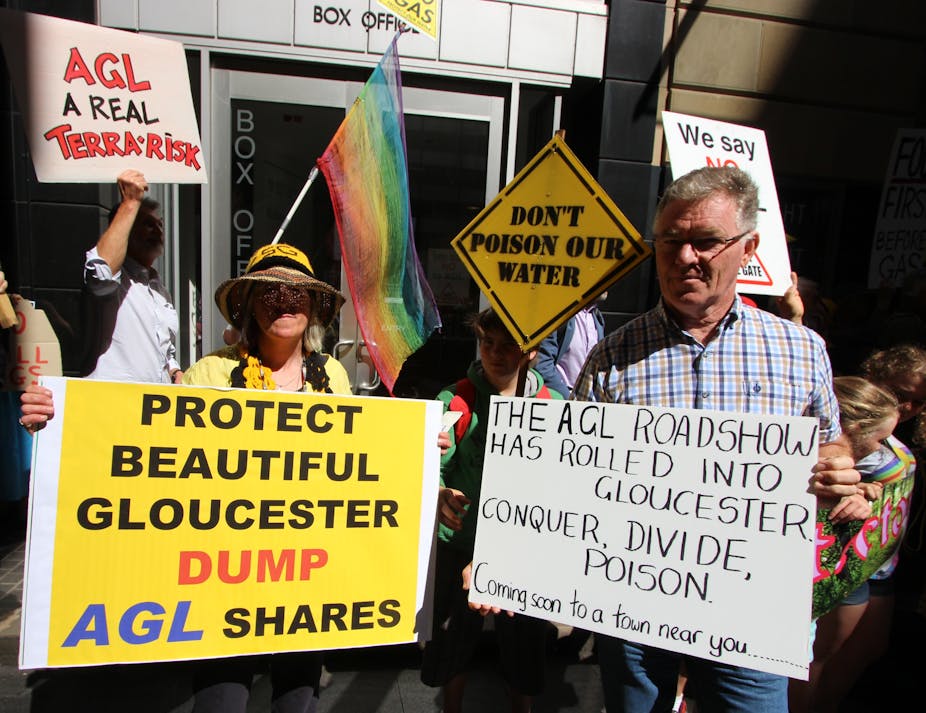A licence to dig is no longer enough for today’s mining and extractive companies. Stakeholder approval is progressively becoming a “must have” for mining companies around the globe — a requirement these companies widely acknowledge through what’s known as a “social licence to operate”.
For a company, social licence to operate can be the difference between community acceptance and opposition that interferes with business.
The Australian National University’s (ANU) recent controversial share divestment from seven resource companies is a stark reminder of this. According to the evaluation undertaken on the university’s behalf by an independent research company, these firms did not meet internationally recognised environmental, social and governance criteria.
While not technically a move to divest from fossil fuels, it was certainly portrayed as such in the ensuing debate.
The divestment may also portend a paradigm shift in the way a social licence to operate is gained and managed.
From one company to many
In most research and practice to date, the social licence has been applied to individual companies or site-specific operations. Recent coal seam gas protests at AGL’s Sydney annual general meeting are a common example.
But the ANU divestment places the social licence of an entire industry in sharp relief. While this is certainly not the first time a sector has faced the retraction of its social licence — the tobacco industry springs immediately to mind — the action deserves consideration.
Given that the global mining and extractive industry has embraced the concept of a social licence over the past decade, what does it mean when that licence comes under fire from institutional investors, as opposed to local communities?
What is a social licence anyway?
Current research confirms that, across the globe, a social licence to operate remains poorly defined, difficult to measure and challenging to manage. Most commonly, social licence is understood to represent “the ongoing acceptance and approval of a [project] by local community members and other stakeholders that can affect its profitability”.
The substance of social licence requirements run the gamut from worker safety to cultural sensitivity. Social licenses can be withdrawn or withheld by communities, or a firm can be completely assimilated into community fabric.
A newly released compilation of research investigating social licence demonstrates strong connections between a company’s legitimacy and acceptance in a community, and its ability to generate profit and contribute to socio-economic development.
In the mining and extractive industry, for instance, major players are keenly focused on social licence and some, such as Rio Tinto, state that a social licence is central to their corporate strategy.
Growing interest
There’s a growing link between social licence and a firm’s profitability, which can be seen through a growing social licence measurement industry.
Major consultancies, like KPMG, are now offering targeted services to assist firms to develop and retain their social licence. The explosion in these types of services is so great that former Placer Dome executive, Jim Cooney (who is usually attributed with coining the phrase in 1998), quipped in a recent interview that he wished he had trademarked the term.
Importantly, the legitimacy derived from social licence is linked tightly to trust between companies and their key stakeholders.
Grassroots campaigns like “Go Fossil Free” in the United States demonstrate this close coupling and the potential power of key stakeholders to generate action through withdrawing a social licence.
Universities taking the lead
The morals, metrics and rejoinders to the ANU divestment have been debated elsewhere.
What is interesting to consider here is how the decision of an independent and respected research organisation will affect the divested companies’ social licence to operate?
Will the ANU’s actions influence other universities? What about other institutional shareholders or individual investors?
At Stanford University in the United States, students — arguably a university’s number-one stakeholder group — successfully pressed the university to divest its stock in coal mining companies. This US$18.7 billion divestment far exceeds the estimated AU$16 million ANU divestment, but both speak volumes about the industry’s social licence to operate, locally and globally.
Indeed the ANU divestment is inseparable from the broader context of the climate change debate. The move was in part a response to student protests for ANU to divest from fossil fuels.
In light of the International Panel on Climate Change’s latest report — released over the weekend — the ANU divestment appears prescient. The synthesis report calls for the phasing out of unrestricted fossil fuel use by 2100.
UN Secretary General Ban Ki-moon responded by urging investors to “please reduce your investments in the coal- and fossil fuel-based economy and [move] to renewable energy”.
The divestment case comes at a time when universities are, themselves, facing greater scrutiny related to their environmental, social and governance activities.
A growing number of Australian universities are releasing sustainability reports on this data, and the need to publicly account for their values and related decisions in these areas will only increase pressure for action like that taken by ANU.
This is where the social licence question becomes particularly knotty. It is a concept which may be applied to a variety of firms and institutions, and universities are no exception.

